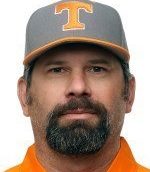The major league baseball draft looks to be punching a few holes in Tennessee coach Tony Vitello’s excellent recruiting effort.
Such is the awkward relationship between colleges and the pros. Coaches hustle to sign the best young players in the country. MLB counters with bonus money. MLB most often wins.
Jonathan Ornelas, 18, nimble shortstop from Peoria, Ariz., average-plus arm, solid bat speed, very promising future, had a choice: $622,800 from the Texas Rangers or a scholarship to Tennessee. With school came the possibility of a higher placement and more money in a future draft. The decision was an obvious gamble but the net result is probably win or win.
Each June I am reminded of Vol adventures in the baseball draft and beyond.
Todd Helton, coming out of Central High School (prep all-American, .655 batting average as a senior), was drafted in the second round in 1992 by the San Diego Padres. The team floated a bonus figure but actually offered $50,000 less. Todd said thanks but no thanks, accepted the scholarship from Tennessee and became a quarterback and the most prominent baseball player in the long and colorful history of the Volunteers.
A knee injury and Peyton Manning derailed Helton’s football career. He fared somewhat better in baseball – .370 for his career, school record 38 home runs, school record 238 RBIs, 0.83 earned run average as a pitcher. As a junior, he won the 1995 Dick Howser Trophy as the best player in the college game.
The Colorado Rockies drafted him in the first round, eighth pick. He played 17 seasons. His .316 and 369 home runs may be enough for the Hall of Fame.
Helton is the only player in MLB history with 100-plus extra-base hits in consecutive seasons, 103 in 2000 and 105 in 2001. He was a gold-glove first baseman. He earned approximately $161,490,047.
He now volunteers as director of UT player development.
Phil Garner advanced from Bearden High to Tennessee, became a two-time all-Southeastern Conference infielder, 1969 NCAA home run champion, earned a business degree and was thought to be smart, very smart.
In 1970, the Montreal Expos drafted him in the eighth round. He did not sign. Seven months later, he was the third pick by Oakland in the secondary draft. He cashed baseball checks for 27 years, from the Athletics, Pittsburgh, Houston, Los Angeles and San Francisco as a player and Houston, Detroit and Milwaukee as a manager.
He hit grand-slam home runs on consecutive days. He earned three World Series rings. In helping the Pirates to the 1979 championship, he set a Series record of nine double plays by a second baseman. He tied a record by batting .500. He missed by one vote driving away with the MVP Corvette.
His nickname, Scrap Iron, was the personification of Phil Garner. He hacked and hammered out a very interesting career.
The tag was earned. Garner was tough, gritty, rugged, fearless, aggressive and sometimes combative. Seldom do you find little infielders, 5-9 and 170, ready and willing to take on the world.
I always thought Phil had at least as much heart as talent. He had a burning passion for winning. He never stopped trying. He was the real deal, no makeup, nothing phony.
I had no idea he was an undercover actor.
One spring training at Bradenton, Fla., he got tangled up in an intense salt and pepper conflict with Dave Parker. They taunted each other with ugly racial slurs. The big black man looked twice the size of Garner. In anticipation of certain manslaughter and possible murder, I took a step back.
They read my reaction precisely. They laughed and hugged and mimicked my expression. Other Pirates hee-hawed. When order was restored, Garner introduced me around as if I was somebody.
Luke Hochevar had a very exciting draft experience. The Colorado lad, a three-sport prep star, was selected by the Los Angeles Dodgers in the 39th round in 2002. He chose to attend the University of Tennessee.
In his junior season, Hochevar struck out a school record 154 batters and posted a 15-3 record. He was named SEC pitcher of the year and won the national Roger Clemens Award.
The Dodgers drafted Hochevar again, this time in the first round. After negotiations bogged down, Hochevar switched agents from Scott Borus to Matt Sosnick and soon agreed to a $2.98 million signing bonus.
The next day he changed his mind, returned to Boras and voided the Dodger deal.
He was drafted yet again in 2006, first overall by the Kansas City Royals. He signed a four-year contract for a sack full, including $5.3 million guaranteed. His career was marked by a World Series high and several statistical lows and too many injuries.
R.A. Dickey attended Tennessee, did well in baseball and better in English literature. He had a 3.35 GPA and was named an Academic All-American. His draft story was pure heartbreak.
After pitching for the Vols and the U.S. Olympic team, Dickey was drafted by the Texas Rangers in the first round, 18th pick, in 1996. During a physical exam, team doctors were astonished to discover he did not have an ulnar collateral ligament in his throwing arm – the essential elbow connection that is so often damaged and requires Tommy John surgery.
The Rangers had offered a signing bonus of $810,000. It dropped to a consolation $75,000.
“I started in professional baseball as what people were calling a freak of nature,” said Dickey.
Much, much later, he became a different kind of freak, winner of the only Cy Young Award based on a knuckleball.
Robert Allen Dickey became my pick as the most interesting man in professional baseball. His book is intriguing.
Marvin West invites reader reactions. His address is marvinwest75@gmail.com.

